Restoring Old Tools
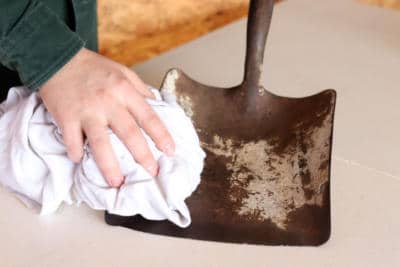
Tools are often viewed as utilitarian items, prized for what they can do for you rather than how they look. It’s true that the condition of your rake or spade matters more in a practical sense than it does aesthetically, but you may be surprised at how an unsightly nick or a smattering of rust can eventually affect the life span of your favorite shovel and make restoring old tools impossible.
Using products from The Real Milk Paint Co., to restore old tools that are hand-me-down or flea-market finds to increase durability while also making them a lot more pleasant to look at. To that end, we’ve assembled all the information you need to get started on tool restoration projects for tools with wood and metal components.
High-Quality Tool Restoration Products
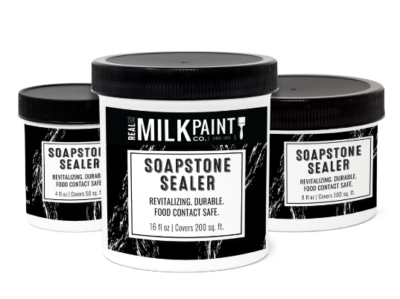
To kick off your tool maintenance project, you need products for wood and products for metal that you cant buy just in any hardware stores. These are some of our most useful products when it comes to restoring old rusted tools:
Soapstone Sealer
Soapstone Sealer stops oxidation in its tracks to prevent continued rusting, making it the ideal way to protect metal components of tool restoration projects. Designed to absorb readily into any porous surface, this plant-based paste wax contains no volatile organic compounds (VOCs) for eco-friendliness and a no-odor formulation that enables pleasant application, even in areas without ventilation.
Hemp Oil
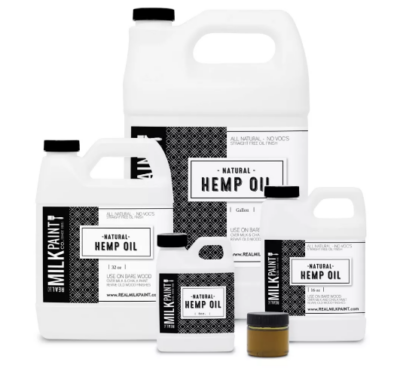 Get the protection you want for wooden handles by using by the Real Milk Paint Co. Perfect for protecting against splintering for safer use of your favorite old rusted tools, Hemp Oil penetrates wood — especially old wood — deeply and thoroughly for easy application and quick drying times. The matte finish keeps wood surfaces you finish with Hemp Oil from being too slick, ensuring a good grip while you work.
Get the protection you want for wooden handles by using by the Real Milk Paint Co. Perfect for protecting against splintering for safer use of your favorite old rusted tools, Hemp Oil penetrates wood — especially old wood — deeply and thoroughly for easy application and quick drying times. The matte finish keeps wood surfaces you finish with Hemp Oil from being too slick, ensuring a good grip while you work.
Pure Tung Oil
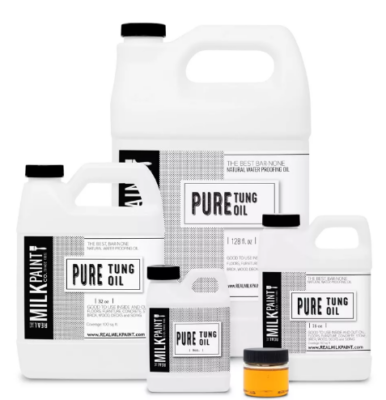 Pure Tung Oil offers a multitude of benefits for your tool restoration projects, though it requires mixing with a solvent for reliable penetration. This all-natural plant oil cures via oxidation rather than evaporation for a flexible finish that resists water, abrasions and acids and doesn’t peel or blister when properly applied. Another benefit of our Pure Tung Oil is its resistance to mold and mildew, making it perfect for hand tools stored in damp spaces like basements and outbuildings.
Pure Tung Oil offers a multitude of benefits for your tool restoration projects, though it requires mixing with a solvent for reliable penetration. This all-natural plant oil cures via oxidation rather than evaporation for a flexible finish that resists water, abrasions and acids and doesn’t peel or blister when properly applied. Another benefit of our Pure Tung Oil is its resistance to mold and mildew, making it perfect for hand tools stored in damp spaces like basements and outbuildings.
Outdoor Defense Oil
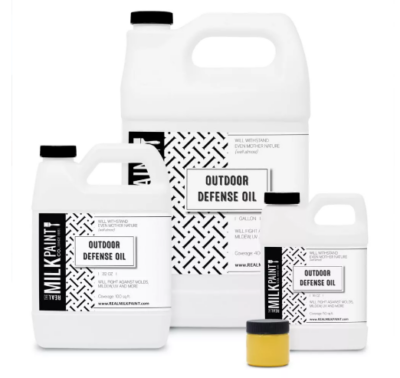 When you’re looking for dependable protection against harsh weather for tools that stay outdoors, Outdoor Defense Oil is the product that ends your search. Formulated from zinc, pine oil and pure tung oil, this environmentally friendly finishing oil works great for use in food gardens thanks to food contact-safe ingredients.
When you’re looking for dependable protection against harsh weather for tools that stay outdoors, Outdoor Defense Oil is the product that ends your search. Formulated from zinc, pine oil and pure tung oil, this environmentally friendly finishing oil works great for use in food gardens thanks to food contact-safe ingredients.
Benefits of Restoring Old Tools With Real Milk Paint Co. Products
Using products from the Real Milk Paint Co. for restoring old tools comes with numerous benefits. Some of these include:
- Natural, organic ingredients are better for the planet and for your family.
- You can work outside without worrying about soil contamination.
- Our products are safe for food contact, just in case you plan on refreshing tools that may find their way into your kitchen.
Far from one-trick ponies, our metal and wood oil finishing products can be used for a ton of other projects, making your purchases sound investments.
The Hand Rusted Tools Restoration Process
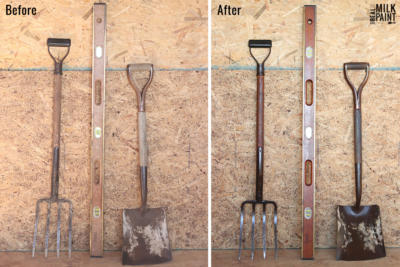 This simple five-step process requires a bit of elbow grease, but most everything you need can be found on our site or in your own home. Set aside part of your Saturday morning and get to work when you have an old tool you want looking good as new.
This simple five-step process requires a bit of elbow grease, but most everything you need can be found on our site or in your own home. Set aside part of your Saturday morning and get to work when you have an old tool you want looking good as new.
Remove All the Rust From Hand Tools
Clean your rusted tools first, carefully removing any debris or caked-on dirt. We used a brass wire brush on our shovel project, but you can use something less aggressive like steel wool, depending on the size and condition of the item.
Just lightly scrub the affected area with the steel wool until the rust comes off. You may need to use a little elbow grease to really get into all the nooks and crannies, but for extremely rusted tools you can’t make a dent in with elbow grease, special techniques are required for rust removal.
One method, for example, requires getting as much rust off as you can, then soaking the metal part of your tool in a mixture of white vinegar and baking soda for from an hour or so to up to 24 hours.
Other chemicals aside from baking soda that help clean rusted tools include our Oxalic Acid, which is normally used to bleach wood and remove rust spots caused by exposure to iron and other metals. Using a wire wheel brush is also another thorough rust removal technique.
Keep in mind that tools like hand planes have special rust removal requirements when it comes to tool restoration. Since both the plane body and base must remain perfectly squared to work properly, sanding these elements using something like a belt sander requires securing paper to a surface, then using the hand plane as you would on wood to keep the tool in proper working order.
Clean and Dry the Hand Tools
After removing rust from your rusty tools, you want to wipe them down with a clean paper towel or rag to rid the surface of any post-scrubbing debris. Continue wiping the rusty tools until the rag or paper towels stays clean. Be sure to wipe down any wooden components with paper towels to prevent warping and so they have time to dry before you apply a protective finish to elements like wood handles.
When dealing with sharp tools, use a sharpening stone to clean the razor sharp edge of your tools. First, wet the stone with water and then use a light strokes to remove any dirt or debris from the blades. Next, use a medium-grit stone to sharpen the blades. Finally, use a fine-grit stone to hone the blades for a sharp, clean edge.
Seal and Protect the Metal Parts
Now that you loose dirt and rust, you now have a blank canvas, begin applying the protective finish from the Real Milk Paint Co. you decided upon. Each of our oils has its particular use, but our Soapstone Sealer works wonders when it comes to preventing oxidation, helping keep essential vintage tools free of rust and flash rust.
No matter which of our protective oils you choose, they all apply easily by using a soft cloth (old T-shirts work nicely). Rub on the oil liberally with a gentle but firm buffing motion, which ensures even application and removes excess finishing product in one easy step.
Coat and Shield Wooden Handles
A comfortable handle lets you easily use common restored tools, including hand saws and hand planes, along with outdoor tools such as rakes and hoes. To protect these vital wood surfaces, apply your choice of protective finishing oils.
Outdoor Defense Oil works great for older tools stored in damp spaces like outbuildings, while Pure Tung Oil and Hemp Oil provide reliable protection for hand and power tools you keep in the garage or basement.
To apply these oils, use a soft, lint-free cloth to buff on the oils in a firm, even motion. Allow the oil to saturate the wood for 40 minutes or so, then add a fresh coat.
Repeat the process of adding more finishing oil over and over again until the flat surface won’t absorb any more oil. Then, make sure the excess oil is wiped clean and allow your wood project time to cure, based on the type of finishing oil by the Real Milk Paint Co. you used.
Allow Hand Tools to Dry and Cure
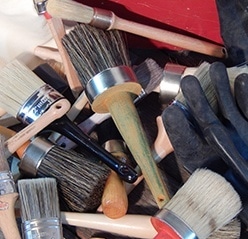 Once you finish applying finishing oil from the Real Milk Paint Co. to your old hand tool, let them dry and allow them to cure for 5 to 7 days before use. This curing time ensures optimal protection and ensures the wooden parts don’t feel sticky when you use them. While full curing of some finishing oils may take up to 30 days, your old hand tools should handle light-duty use with aplomb.
Once you finish applying finishing oil from the Real Milk Paint Co. to your old hand tool, let them dry and allow them to cure for 5 to 7 days before use. This curing time ensures optimal protection and ensures the wooden parts don’t feel sticky when you use them. While full curing of some finishing oils may take up to 30 days, your old hand tools should handle light-duty use with aplomb.
Whether you’re a frugal DIY enthusiast eager to prolong the life of your favorite tools or a collector hoping to breathe new life into an antique find, Real Milk Paint products help you safely and easily rehabilitate and preserve your favorite tools.



